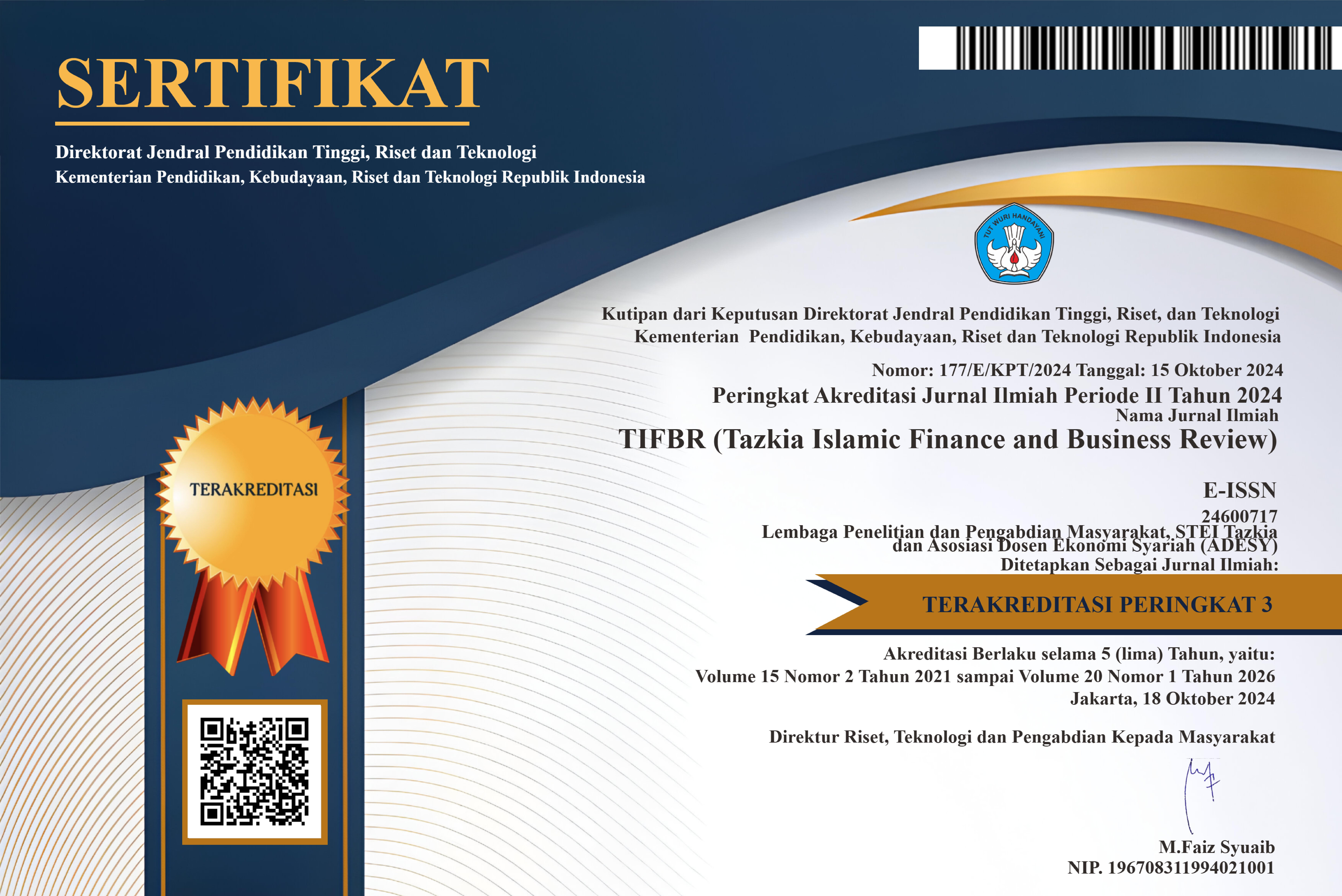Effectiveness of Conventional and Syariah Monetary Policy Transmission
DOI:
https://doi.org/10.30993/tifbr.v8i1.63Abstrak
Objective - The purpose of this study is to compare the effectiveness of monetary policy transmission through conventional and Islamic instruments through the interest rate channel and profit loss sharing / margins channel, to control the price level (inflation) and economic growth (output)
Method – Methodology used in this study is the Vector Auto Regressive (VAR) / Vector Error correction model (VECM) to see the effect of shock and long-term effects on inflation and output. Variables used are sbi interest rates, PUAB interest rate, deposit rates and lending rates, as well as from the Islamic side is SBIS yield, yield PUAS, profit lost sharing for the deposits and margin financing. This study use Unit Root Test, Cointegration degree of integration test, test causality, VECM and IRF estimates. Using monthly time series data from 2009 s / d 2012.
Result – Results of the study showed that the test based on Granger causality, overall, the transmission channel of monetary policy according to the conventional theory, while the monetary policy transmission channel Sharia can not be clearly identified and disconnected in yield / profit and loss sharing deposits. And based on the estimated VECM is known that in the long term Islamic instruments is the right instrument to control inflation.
Conclusion – This finding concluded that syariah instruments is the effective instrument in reducing inflation rate and also encourage the growth of Islamic banking, and should also consider the right margin level to increase the output on real sector.
Keywords : Monetary Transmission, Central Bank, Industrial Production Index, Consumer Price Index
##submission.downloads##
Diterbitkan
Cara Mengutip
Terbitan
Bagian
Lisensi

Tazkia Islamic Finance and Business Review (TIFBR) is licensed under a Creative Commons Attribution-NonCommercial 4.0 International License.
Authors who publish with this journal agree to the following terms:
- Authors retain copyright and grant the journal right of first publication with the work simultaneously licensed under a Creative Commons Attribution License that allows others to share the work with an acknowledgment of the work's authorship and initial publication in this journal.
- Authors are able to enter into separate, additional contractual arrangements for the non-exclusive distribution of the journal's published version of the work (e.g., post it to an institutional repository or publish it in a book), with an acknowledgment of its initial publication in this journal.
- Authors are permitted and encouraged to post their work online (e.g., in institutional repositories or on their website), as it can lead to productive exchanges, as well as earlier and greater citation of published work (See the Effect of Open Access).

















